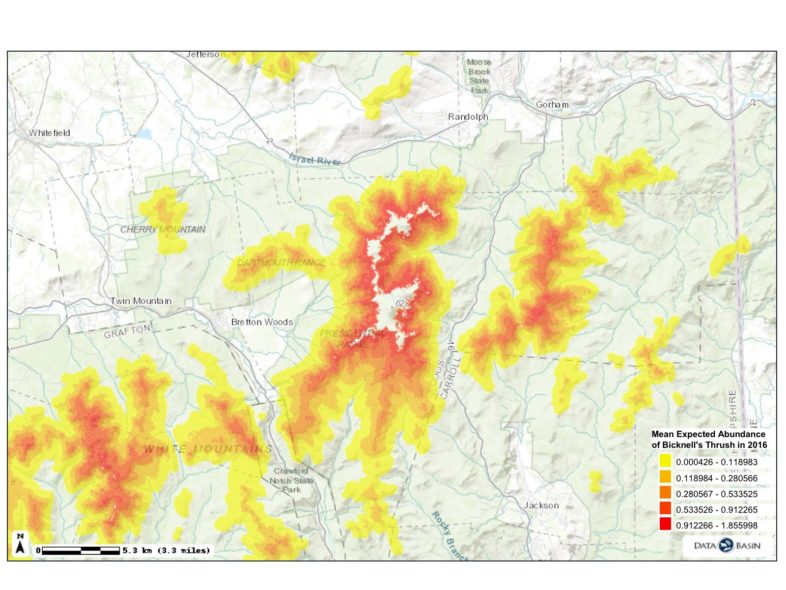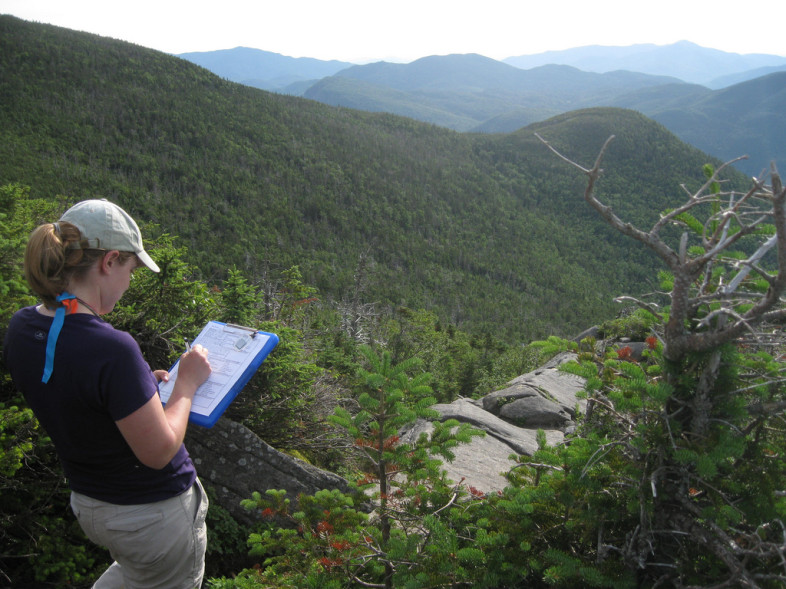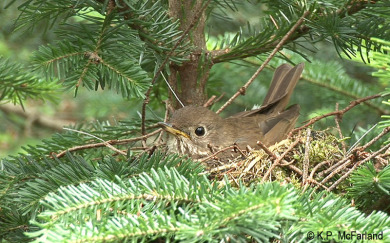Since 2000, citizen scientists have been monitoring populations of montane bird species in the high-elevation forests of the northeastern US through VCE’s Mountain Birdwatch (MBW). With 129 routes placed along montane hiking trails throughout the region, there are opportunities for volunteers across eastern New York and New England.
Mountain Birdwatch provides region-wide monitoring for 10 species of birds such as the iconic Bicknell’s Thrush, Blackpoll Warbler, Yellow-bellied Flycatcher, and others that are rarely detected during traditional roadside monitoring schemes like the Breeding Bird Survey. These repeated point-count data will now be made available through eBird each year. Since 2010 alone, several hundred Mountain Birdwatch citizen scientists have conducted 18,636 five-minute point counts at nearly 750 remote locations in the mountains of New York and New England. Recently, we uploaded more than 37,000 checklists to eBird spanning the last 17 years.
Mountain Birdwatch routes consist of ~6 sampling stations located along hiking trails in the montane spruce-fir forest, generally above 2,600 feet elevation. Observers choose any morning in June with fair weather to complete their surveys. The simple protocol and short list of monitored species means that almost any birder who likes to hike can participate. The results provide powerful insight into the health of our montane bird populations in the northeastern U.S.

Almost all of these strings of Bicknell’s Thrush records are from Mountain Birdwatch data, shown here for in the Adirondacks of New York. Click to Explore map on eBird.
For example, using MBW data, we recently published a population estimate for Bicknell’s Thrush in the U.S. (~71,000), and identified that the White Mountain National Forest likely harbors nearly one-third of the entire U.S. population of Bicknell’s Thrush—one of the most range-restricted bird species in North America. With these data, we also created a fine-scale (<1-hectare) online abundance map predicting the population size of Bicknell’s Thrush across all lands in New York and New England.
Interested in contributing? We still have routes available to survey this June across New York and New England. You can learn more about the Mountain Birdwatch program, see a map of available routes, and find out the status and population trends of monitored bird species by visiting our State of the Mountain Birds website. Interested birders should contact Jason Hill ().

Abundance estimate map for the Mount Washington, New Hampshire area created at databasin.org. The new map can be downloaded or viewed online at Data Basin: a free and open portal to thousands of scientifically-grounded spatial datasets (visit https://databasin.org/galleries/b5e98de6a2fb43d586665256ec78059f).


